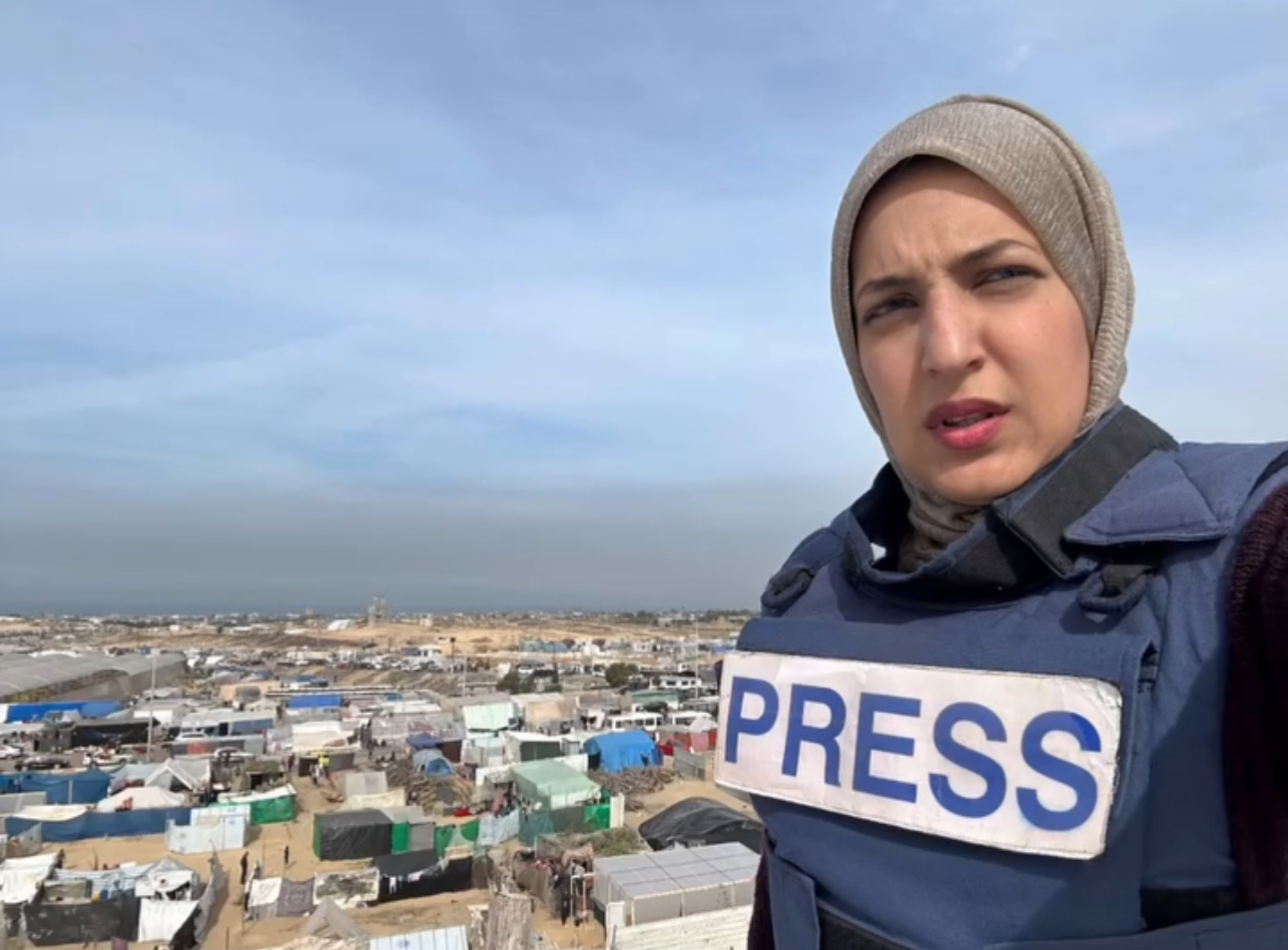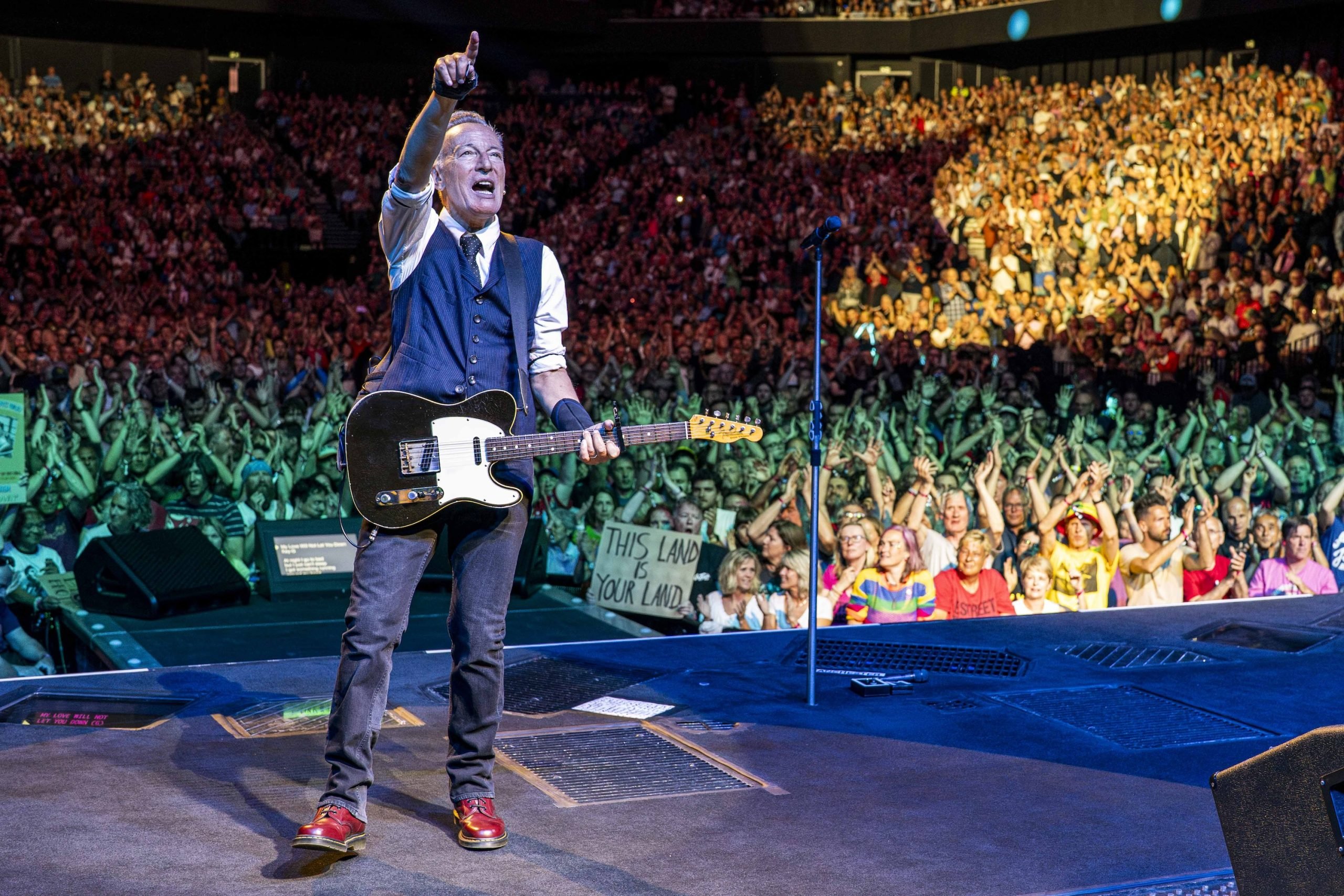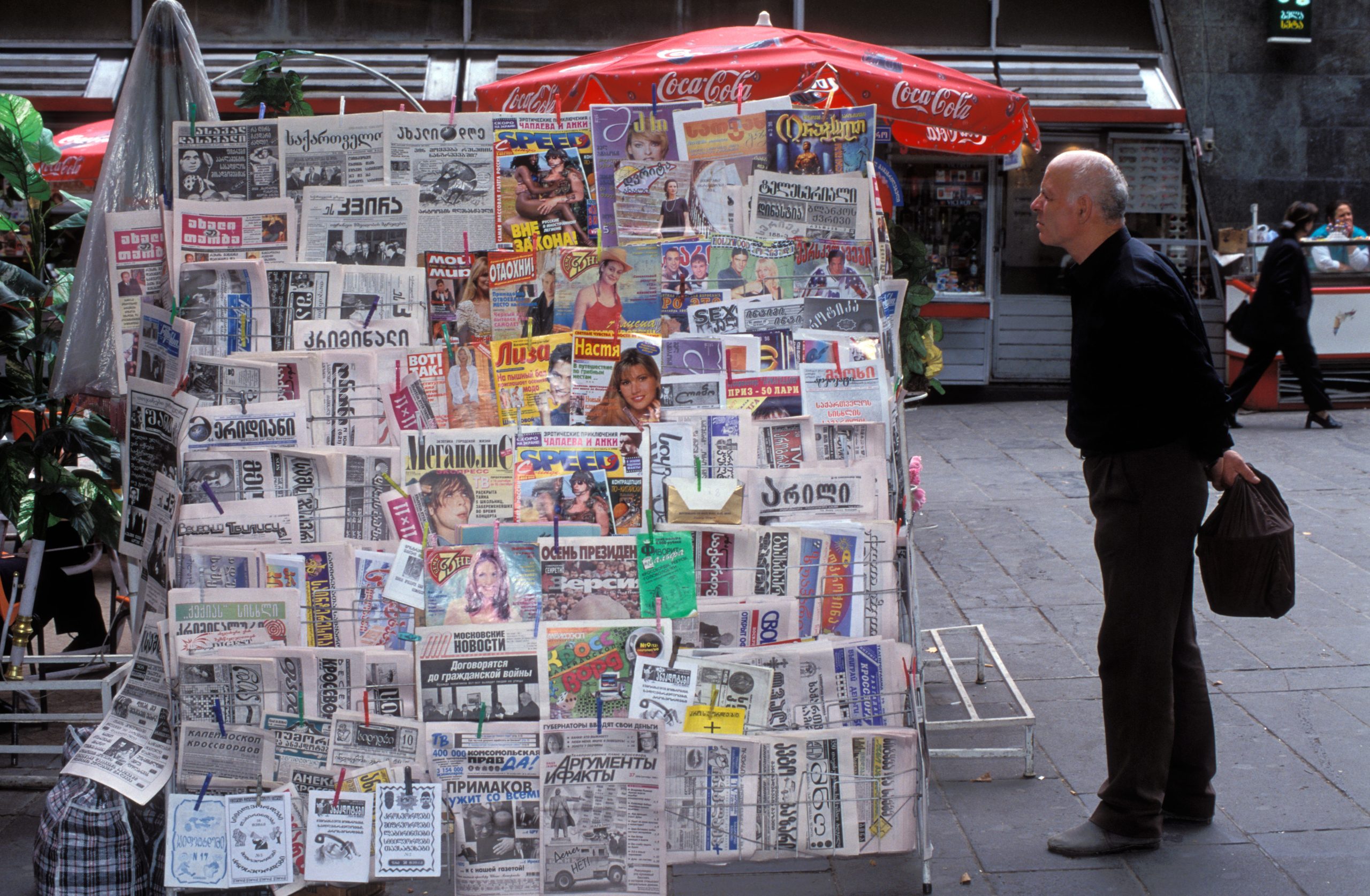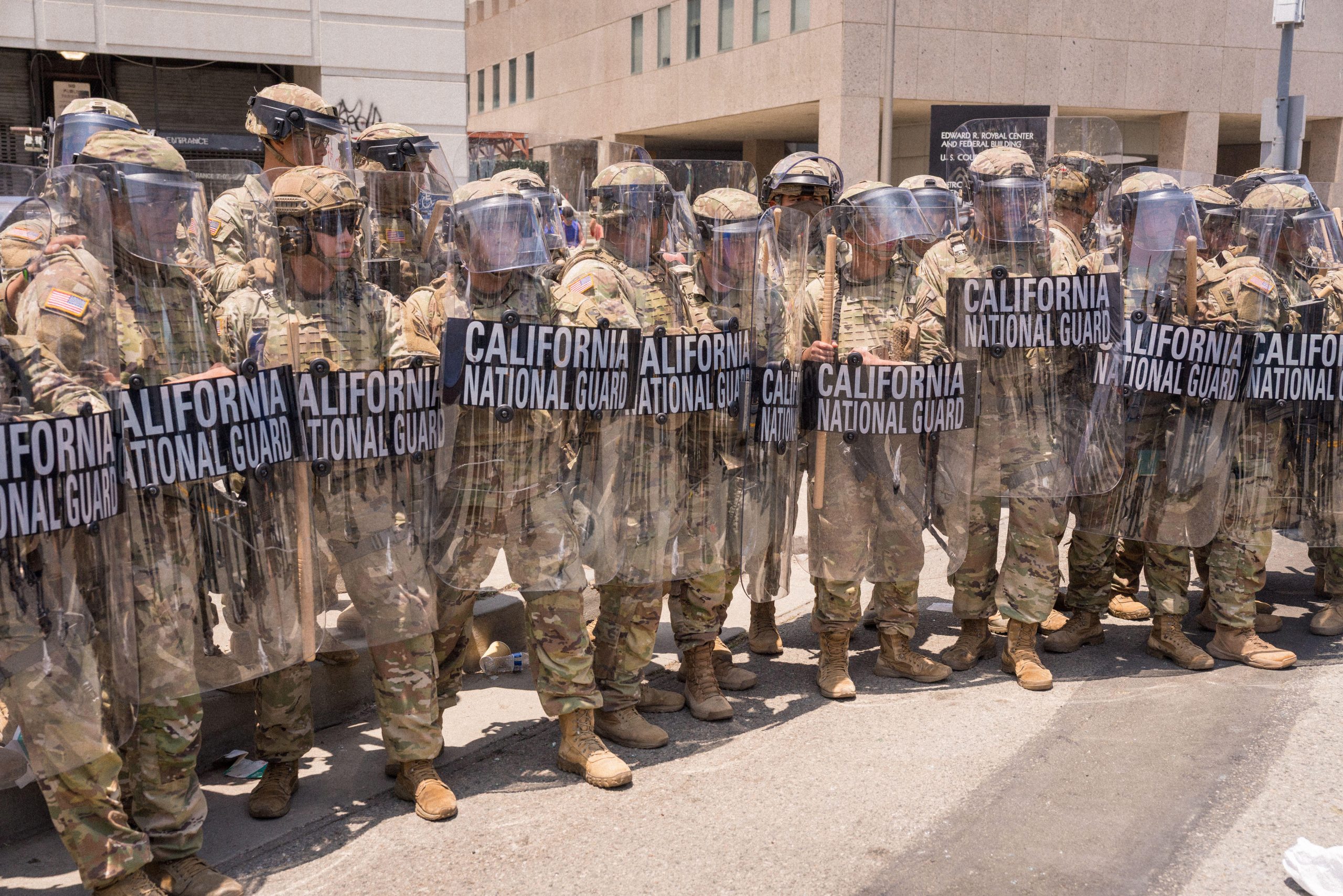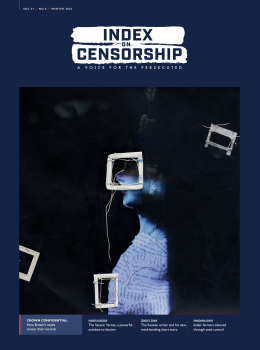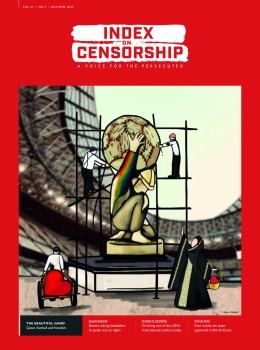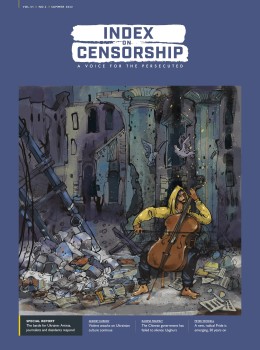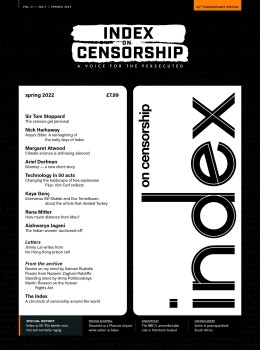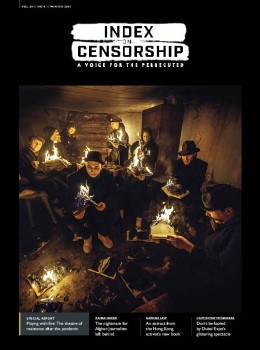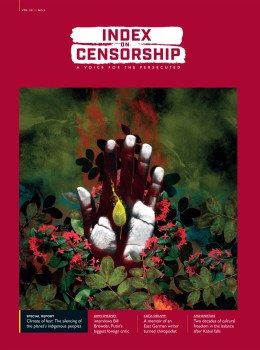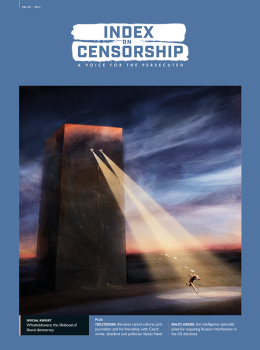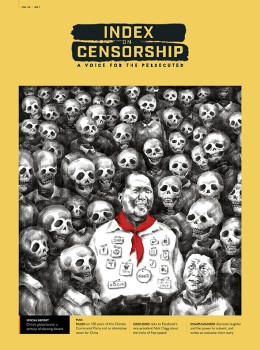Writer and academic Fred Halliday died this week at the age of 64. Halliday, a keen analyst of Middle East and Iranian affairs, had been a contributor to Index on Censorship. In this article for Index from 2001, Halliday surveys the scene before Iran’s elections.
The next few months may be decisive for the future direction of Iran and for the fate of the revolutionary regime. They could also seal the fate of the many journalists and writers languishing in Tehran’s jails
An air of uncertainty and anxiety hangs over Tehran, now a smog laden city of 12 million. No one, Iranian or foreigner, is confident of how the next few months will turn out, of whether the reformist current that has swept the country since 1997 will continue, or will founder, or be overturned, in the face of determined and possibly violent conservative opposition.
The presidential elections of 1997, in which Mohammad Khatami triumphed as a reform candidate, and the majlis (parliamentary) elections of February 2000, appeared to confirm that a strong majority for reform exists. But these messages from below are met by a ruling elite that is divided, and part of which is alarmed by the calls for change. The next testing point will be the presidential elections scheduled for June 2001: nothing, not even President Khatami’s commitment to running for a second term, is as yet certain. A revolution that in 1979 swept all before it now faces difficult choices, both abroad and at home.
The pressures for political and social change in Iran are accompanied by widespread debates about the direction of the country, about the further development of the revolution, and about Islam and the modern world. Nothing could be more inaccurate with regard to the discussion in Iran, and its relation to the outside world, than a simple contrasting of “Iranian” or “Islamic” values, and ideas, with “western” ones: there is as much diversity within Iran, and within Islamic discussion, including within the clergy, as there is in the international East-West dimension.
For those of a secular orientation, the influence of Marxism, prevalent two decades ago, has now yielded to an interest in liberal thinking: Popper and Mill, not to mention theories of “civil society” and a “third way”, have replaced Lenin and Mao. There are those in Iran who want to keep the system established by Ayatollah Khomeini in the revolution and the eight-year war with Iraq: there are many who believe it should change, and some who wish it could remain the same but realise, and fear, that if it does not change it will be swept aside. The fate of the Shah, and that of Gorbachev, are very much in the minds of the Iranian political elite.
The dramatic elections of recent years have nonetheless altered the political climate in Iran. There is a strong movement for change, a movement that is named after the Persian date on which Khatami was elected, the Dovvom-i Khordad (2 Khordad or 17 May 1997). Part of this protest comes from above: it is expressed by Khatami in his call for the rule of law and civil society. But more important, there is clamour for change from below.
The issue that has provoked most controversy in recent years is that of freedom of expression. The Ministry of Islamic Guidance administers censorship but book publishing is relatively free in Iran, provided core issues pertaining to religion and the state are not touched. You can buy a whole range of books on modern Iranian history. Frank McCourt’s Angela’s Ashes has sold well in Persian translation, a success not unrelated to its portrayal of the clergy, while John Gray’s Men are from Mars, Women are from Venus has been a bestseller. But the press is another matter. After Khatami’s victory in 1997, an explosion of critical newspapers and weeklies burst on to the streets, allowing for unprecedented discussions about social and political issues. And these weren’t limited to debates on issues such as feminism, democracy and liberalism, but included new interpretations of Islamic history and culture, and even saw direct and sensitive questions concerning the foreign bank accounts of senior clerics or the behaviour of the intelligence services being asked.
The press captures the mood of widespread dissatisfaction. During a meeting at Tehran University in early August that was organised to celebrate the release from jail of Mohsen Kadivar, a cleric sentenced to 18 months for “disturbing public opinion”, Professor Hashem Aghajaeri was direct: “Religion has performed badly when it has gone along with power … Those who believe Islamic jurisprudence is a kind of divinity on earth, that it cannot be criticised, or judged by the law, must enter debates with Islamic thinkers and let voters choose. Governments that suppress free thinking under the name of religion are not only not religious governments but are not even humane governments. It is time for the institution of religion to become separated from the institution of government.” His audience of 1,000 students were reported to have applauded vigorously.
But those opposed to change have fought back: independent writers have been charged by clerical courts with opposing Islam and the revolution, and in 1998, a spate of assassinations of writers was blamed on rogue elements within the security forces. In 1999 there were clashes between students and the security forces and, since 2000, the clampdown has become even heavier. After attending a conference on Iran, held last April in the Heinrich Boll Institute, Berlin, several participants were arrested and tried on returning to Tehran. Among those detained were two supporters of women’s rights, Mehrangiz Kar and Shahla Lahiji; a leader of the student organisation Daftar-i Tahkim-i Vahdat (The Office for the Strengthening of Unity); Hojjatislam Hasan Eshkevari, a reformist cleric; and the editors of three newspapers, Reza Jalaipour of Asr-i Azadegan (Age of the Free), Ezzatollah Sahabi of Iran-i Farda (Tomorrow’s Iran), and Alireza Alavitabar of Subh-i Emruz (This Morning), all of which were subsequently banned. But the most prominent of those arrested was Akbar Ganji, a journalist who had exposed the involvement of high-ranking officials in the killing of intellectuals. He was sentenced to 10 years’ imprisomnent, followed by five years of exile in a remote village.
As in other authoritarian systems, external threat has been used to justify internal repression: but here too some relaxation is evident.
The changes in regard to external relations are in some respects more consolidated. As the country marked in September 2000 the twentieth anniversary of the outbreak of the war with Iraq, Tehran was dominated by giant posters celebrating the “holy defence” of the country against attack. There were, by comparison, few images of the revolution itself.
Posters and paintings commemorated the soldiers who died in the eight-year war, as well as a group of Iranian diplomats killed by the Taliban in 1998. This commemoration of the war was, however, not only a way of remembering the past and mobilising support for the state; it also served to mark out a possible future line for Iranian foreign policy. There is tangible sense of nationalism and the need to identify what is in Iran’s national interest in the atmosphere. And the turn to nationalism has wider implications, both for Iran’s support for broader “Islamic” causes and for the tenor of internal debate.
Iran’s Islamic Revolution replicates in its rhetoric and action many of the tensions that beset other revolutions: internationalist militancy and defence of the state, appeals to other oppressed peoples and exaltation of their own people. The French Revolution proclaimed la grande nation. Two centuries later, posters in Tehran recall the words of Ayatollah Khomeini, who referred to Iran as in mellat-i bozorg — “this great nation”. The Iranian Revolution also replicated its cultural policy some of what China had gone through. Iranian intellectuals sardonically remark, with regard to the current climate of oppression, that their country did the reverse of China: it has its “100 Flowers Campaign” after its “cultural revolution”. In China, the campaign of 1957, a persecution of those previously allowed to speak freely, was followed by an all-out onslaught in the Cultural Revolution that began in 1965. The Iranian Cultural Revolution, launched as an attack on the universities in 1980, served, however, not only to attack “foreign” ideas and influences, its stated purpose, but also to destroy a diversity of tradition and culture within the country itself. In Iran, this entailed an assault on the more hedonistic trends in Persian poetry, a ban on women singing, and even, for a short time, a ban on chess.
As befell earlier revolutionary regimes, the Iranian state is now aware that in the early years of power it paid a high price, not only for its repression at home, but also for exporting revolution to other states. In private, officials recognise two mistakes in particular: the seizure and occupation of the US embassy in November 1979, and the failure to make peace with Iraq in July 1982. The US embassy compound in the city centre is still used by the revolutionary guards, its walls covered with anti-imperialist posters. Yet henceforward, it is implied, interest rather than ideology will prevail. One result of this new approach is a desire to improve relations with the Arab world: Khomeini refused to use the term “Saudi Arabia”, referring to it as “the so-called Kingdom of Najd and Hijaz”, but there has been a significant improvement in relations with Riyadh, and diplomatic ties with Egypt and Algeria, hitherto denounced as secularist oppressors, have been renewed.
One Arab country that Iran has not improved relations with is Iraq: the twin objects of US dual containment always judged it wiser to try to portray the other as the real enemy of international stability rather than to band together, and both still support opposition groups committed to the overthrow of the other’s regime. Although Iranian pilgrims and traders now visit Baghdad and Shi’ite shrines in Iraq, the rhetorical war continues: Saddam has, in recent months, stepped up anti-Iranian propaganda. Iran knows that, in the longer run, a revived Iraq may turn on it again, as it did in 1980.
The rethinking of foreign policy is, therefore, part of the broader debate within Iran about the future of the Islamic Republic itself. Here there is much talk of democratisation and of jame-yi madani (civil society). On three occasions in the past century Iranian society has erupted in protest from below: in the Constitutional Revolution of 1906, when up to 15,000 protesters took refuge in the spacious 40-acre grounds of the British embassy; in the period of nationalist prime minister Mosadeq (1951-53); and in the months preceding and following the fall of the Shah (1978-79).
Each of these earlier experiments in civil society was crushed — the first two with active foreign intervention. The question now is whether this will happen again. The Iranian debate involves much speculation on the preconditions for democracy itself and familiar obstacles are encountered: if decades ago these were “imperialism”, or “oriental despotism”, the current favourite is that Iran, by dint of its oil, is a “rentier” society. For the more secular, the problem is the undemocratic nature of the clergy itself equally important for today’s debate is the legacy that history has left in the field of literature and social criticism. Throughout modern times, Iran has had a vibrant literary culture; one that draws on the writings of the Persian past, but interacts with western literature. In the 1950s and 1960s there was a vigorous translation of western writings, limited only by censorship of those works, such as Macbeth or Hamlet, which portrayed the slaying of a monarch. Much, but not all, of this writing was influenced by Marxism of an orthodox communist kind: Gorky, Sartre and Jack London were favourite authors. Many of these writers were critical of both forms of conservatism afflicting the country, that of the Shah’s regime and that of the Islamic clergy. Yet this engagement with modernism from abroad was accompanied by an effervescence within the clerical world that found its expression in the revolution of1979.
Opponents of change accuse the reformist writers of being “against Islam”. Ayatollah Khamenei declared, in his letter to the majlis last August: “If the enemies infiltrate the press, this will be a big danger to the country’s security and the people’s religious beliefs”. Others speak of the “silent aggression” and “cultural aggression” coming from abroad. Yet what is not at stake is the Islamic character of the state itself, in the sense that broad respect for Islamic values still exists. In the south of the city a huge complex is being built around the tomb of Khomeini, who died in 1989, and people there talk of turning it into one of the great pilgrimage sites of Islam, along with Mecca, Jerusalem and the Shi’ite shrines.
Over it hangs the red flag of Imam Hussein, grandson of the Prophet Muhammad and the founder of Shi’ite Islam who died in 680. Crowds, many from Central Asia, throng the approaches. One man I spoke to, a 28-year-old chauffeur, expressed his criticism of the current élite through his praise for Khomeini: “The Imam was a straightforward man, he did not lie. He was not like the others,” he said.
Twenty years of economic mismanagement and political repression, and a growing contempt for the corruption associated with many of the clergy, have led a shift of opinion within the country. How far this will go no one can tell. Some restrictions — on women’s dress codes, for example — have been eased, but the country is still far from allowing the kind of mixture of Islamic and western clothing that is common In other Muslim states, such as Egypt. The protest movement is influenced by economic aspirations and by a western world seen through videos and magazines, and familiar from the large post-revolutionary Diaspora.
It is unclear, however, what people want and how far even Khatami is prepared to go. Certainly more than two decades after the revolution, the old slogans no longer work. The economy is not delivering, and tliere is widespread unemployment. Many of those who supported the revolution and fought Iraq are now disillusioned. Younger people are resisting the social restrictions imposed by the state. There is a huge hunger for political freedom and free speech. Reports suggest that, far from this being confined to Tehran, the feeling of protest is even stronger outside the capital. In early August riots broke out in the southern city of Khorramshahr, scene of some of the heaviest fighting in the Iran-Iraq war, when members of the pasdaran (revolutionary guard) attacked a reformist meeting.
This is not, therefore, a conventional situation of social protest challenging a state — the division runs within each. The movement from below faces a state that is divided within itself. Against the reformist movement is ranged a coalition of clerical power associated with faqih (spiritual leader) Ayatollah Khamenei, plus some elements in the army, backed by conservative militia forces. The position of the faqih has become the most controversial in Iran: reformers want the position curtailed and subject to election, conservatives shout the slogan “Death to they who are against the faqih”. The clergy are, as they were in the revolution, divided; some favour social and political reform. Some even blame the revolution for discrediting Islam in the eyes of the population.
One of the most militant critics of the regime, Abdullah Nuri, was imprisoned after a trial in which he openly questioned the clerical hold on power and denounced the corruption and abuse of office of his fellow mullahs. Others are deeply entrenched in the regime and have acquired wealth and power through it: they are now a financial as well as a cultural force, and do not wish to lose their power or privileges.
One of the leading clerics is clear enough: according to Ayatollah Jannati, “You cannot save Islam with liberalism and tolerance.” True to ideological type, Jannati went on to question whether, in an Islamic republic, there was a need for novels.
President Khatami himself has wished so far to maintain a coalition with Khamenei. Many of his followers do not want this to continue. In August 2000, when Khamenei intervened in parliament to stop a liberal press law from being passed, he caused great anger within the reformist camp. If Khatami does not press ahead with his reform, then he runs the risk of losing support and facing increased critcism. If he breaks with Khamenei, then there is a risk of a confrontation with the clerical security complex that opposed him. The followers of Khatami do not want violence, but those opposed to reform are prepared to use it, as they have shown in the past. It is believed that the reformers have the upper hand in the armed forces and the ministry of intelligence, and that a majority of the revolutionary guards voted for reformist candidates in the majlis elections: but the judiciary and some of the security forces remain opposed to change.
At the moment there is a ceasefire in the war between reformers and conservatives. The great popular expectations that accompanied the majlis elections of February have faded. Several of the leading figures of the Dovvom-i Khordad reform movement, clergy and other intellectuals, are in prison, even while their books are on sale across Tehran. There is uncertainty about the economy, and about Khatami’s ability to push through economic reform: this is all the more difficult because some of those who favour the liberalisation of social and political life are as opposed to liberalisation of the economy as they are to any examination of human rights abuses. One particular issue of contention is foreign investment: Iran is not offering international oil and gas firms the production-sharing agreements that other producer states do, and there is little sign that there is sufficient political support for this at the moment.
Barring unexpected developments, the next great test of the reform movement will come in June this year, with the new round of presidential elections. Khatami has stated that he may stand for a second term, and most people expect him to do so. If he runs, it is unlikely that any serious candidate could compete against him. But supporters of former president Rafsanjani may put forward a candidate, possibly former foreign minister Velayati. More important, however, Khatami may not be able to keep the support of those who have, up to now, supported him. The next few months will be decisive for the future direction of Iran and for the fate of the revolutionary regime. Only when they are over will we know the fate of Iran’s fourth great experiment in civil society. Whatever happens, Iran’s writers and journalists will have plenty to say about these developments: what is not clear is whether these words will find their way into print.
Fred Halliday, 1946-2010
Read Anthony Barnett’s obituary of Halliday, plus tributes from around the world, here

